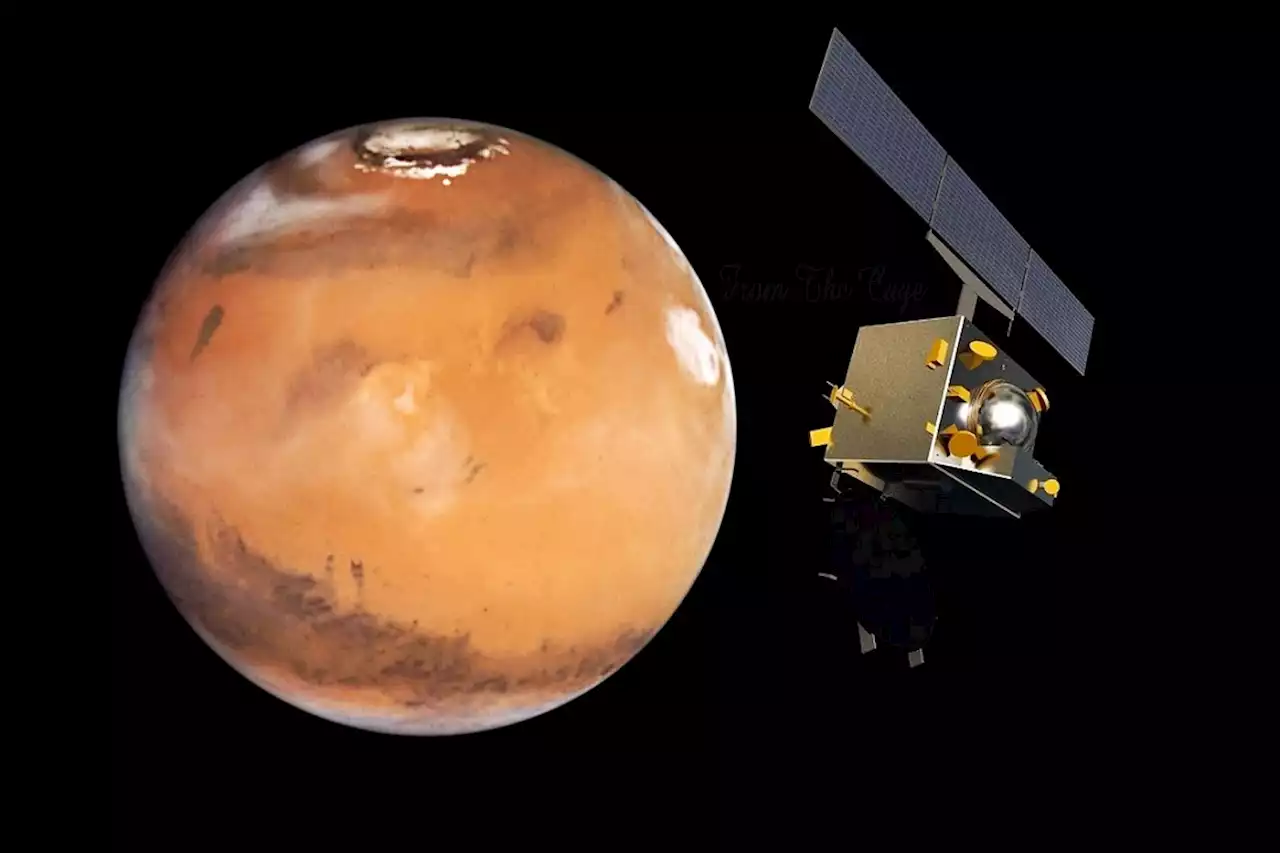The space agency says it will enable a number of proposed missions to Mars, Venus, and Titan.
Now, the space agency aims to test a large inflatable aeroshell that could one day be used to deploy large payloads on Mars safely and other planets in the Solar System, aNASA's Low-Earth Orbit Flight Test of an Inflatable Decelerator will run a large inflatable heat shield — that looks remarkably like a flying saucer — through its paces early next month.
Mars's atmosphere is much less dense than the Earth's, which makes the process of slowing down spacecraft extremely challenging — as has been seen on several occasions with Mars rover landings. The atmosphere is too thin to decelerate spacecraft as quickly as it would happen on Earth, meaning entry into the atmosphere is much riskier and requires even greater protection than it does on Earth.That's why NASA will soon test its large deployable LOFTID aeroshell.
The structure is designed to allow spacecraft to slow down at higher altitudes in the upper atmosphere, meaning they will experience less intense heat. On , NASA says the "technology [will enable] a variety of proposed NASA missions to destinations such as Mars, Venus, Titan as well as return to Earth."For the upcoming demonstration test on November 1, LOFTID will inflate as it descends from low-Earth orbit. If all goes to plan, NASA says the technology could be used in future crew landing missions and for sending robotic missions to Mars and returning heavier payloads to Earth.
Those who followed coverage of NASA's Mars Perseverance rover mission will likely remember the mission lander'sbeing described as a heart-stopping "seven minutes of terror". During those critical moments, many of the mission's ground team feared the $2.7 billion rover might not make it down in one piece.
United States Latest News, United States Headlines
Similar News:You can also read news stories similar to this one that we have collected from other news sources.
 Groundbreaking low-cost Indian Mars mission comes to an end | Digital TrendsNearly a decade after its launch, India's Mars Orbiter Mission has run out of fuel and will cease operations.
Groundbreaking low-cost Indian Mars mission comes to an end | Digital TrendsNearly a decade after its launch, India's Mars Orbiter Mission has run out of fuel and will cease operations.
Read more »
 Early Mars habitability and global cooling by H2-based methanogens - Nature AstronomyEarly Martian surface and subsurface were probably habitable for methanogenic microorganisms with a hydrogen-based metabolism, according to an ecological model coupled with a geochemical simulation. Feedback effects of such a biosphere on the atmosphere might have driven strong global cooling.
Early Mars habitability and global cooling by H2-based methanogens - Nature AstronomyEarly Martian surface and subsurface were probably habitable for methanogenic microorganisms with a hydrogen-based metabolism, according to an ecological model coupled with a geochemical simulation. Feedback effects of such a biosphere on the atmosphere might have driven strong global cooling.
Read more »
 Underground microbes may have swarmed ancient MarsCAPE CANAVERAL, Fla. (AP) — Ancient Mars may have had an environment capable of harboring an underground world teeming with microscopic organisms, French scientists reported Monday. But if they existed, these simple life forms would have altered the atmosphere so profoundly that they triggered a Martian Ice Age and snuffed themselves out, the researchers concluded.
Underground microbes may have swarmed ancient MarsCAPE CANAVERAL, Fla. (AP) — Ancient Mars may have had an environment capable of harboring an underground world teeming with microscopic organisms, French scientists reported Monday. But if they existed, these simple life forms would have altered the atmosphere so profoundly that they triggered a Martian Ice Age and snuffed themselves out, the researchers concluded.
Read more »
 Ancient Mars microbes triggered climate change that made it hard for them to surviveTereza is a London-based science and technology journalist, aspiring fiction writer and amateur gymnast. Originally from Prague, the Czech Republic, she spent the first seven years of her career working as a reporter, script-writer and presenter for various TV programmes of the Czech Public Service Television. She later took a career break to pursue further education and added a Master's in Science from the International Space University, France, to her Bachelor's in Journalism and Master's in Cultural Anthropology from Prague's Charles University. She worked as a reporter at the Engineering and Technology magazine, freelanced for a range of publications including Live Science, Space.com, Professional Engineering, Via Satellite and Space News and served as a maternity cover science editor at the European Space Agency.
Ancient Mars microbes triggered climate change that made it hard for them to surviveTereza is a London-based science and technology journalist, aspiring fiction writer and amateur gymnast. Originally from Prague, the Czech Republic, she spent the first seven years of her career working as a reporter, script-writer and presenter for various TV programmes of the Czech Public Service Television. She later took a career break to pursue further education and added a Master's in Science from the International Space University, France, to her Bachelor's in Journalism and Master's in Cultural Anthropology from Prague's Charles University. She worked as a reporter at the Engineering and Technology magazine, freelanced for a range of publications including Live Science, Space.com, Professional Engineering, Via Satellite and Space News and served as a maternity cover science editor at the European Space Agency.
Read more »
 See A Beautiful ‘Hunter’s Moon’ Cruise Past Mars: The Naked Eye Night Sky This WeekLet's go stargazing! The northern hemisphere’s celestial highlights (mid-northern latitudes) for the week ahead.
See A Beautiful ‘Hunter’s Moon’ Cruise Past Mars: The Naked Eye Night Sky This WeekLet's go stargazing! The northern hemisphere’s celestial highlights (mid-northern latitudes) for the week ahead.
Read more »
